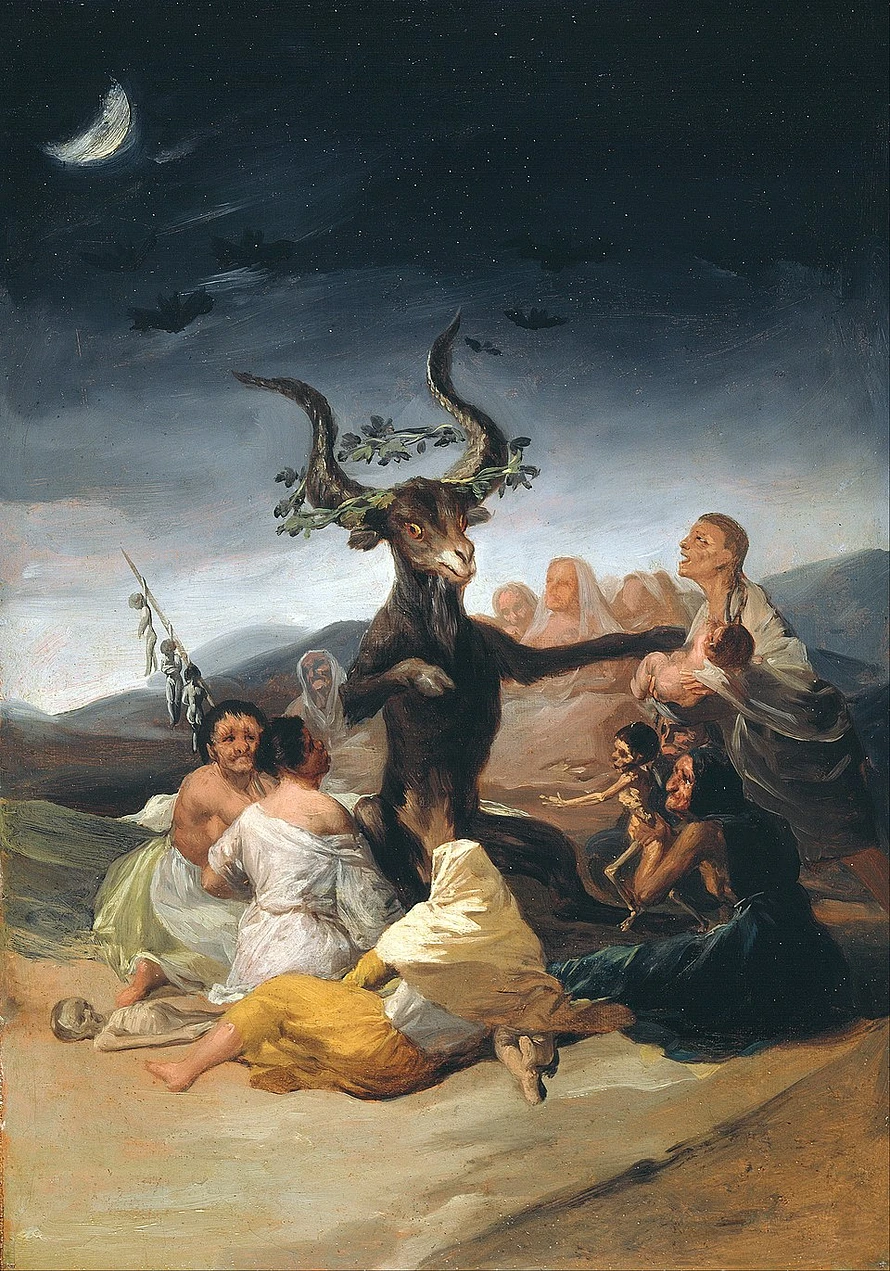Goya’s Witches’ Sabbath: Fear, Folklore, and the Power of the Unseen
Explore Francisco Goya’s Witches’ Sabbath, a haunting portrayal of superstition and fear. Discover its meaning, historical context, and its place in Goya’s Black Paintings.
The Occult on Canvas: Goya’s Witches’ Sabbath
Francisco Goya’s Witches’ Sabbath is one of his most disturbing and symbolic works—an eerie masterpiece that blends Spanish folklore, dark satire, and psychological horror. Painted between 1819 and 1823 as part of his Black Paintings series, it portrays a terrifying gathering of witches worshipping Satan, who appears as a monstrous black goat.
This painting wasn’t just about witches—it was Goya’s grim commentary on the dangerous power of ignorance, fear, and religious fanaticism in 19th-century Spain.
What Is Witches’ Sabbath?
In the painting, we see a coven of witches huddled under a bleak sky, surrounding a towering, horned goat representing the Devil. The goat’s eyes glow, and he seems to command the attention of the fearful figures—some are enthralled, others appear terrified or even dead.
One disturbing detail: a child’s corpse lies in the foreground, possibly a victim of ritual sacrifice or moral corruption. It’s a grotesque scene, painted in dark, earthy tones, with almost no light or relief.
Historical and Cultural Context
In Goya’s time, witch hunts and the Spanish Inquisition were fresh in the public memory. Superstition, especially in rural areas, was still deeply embedded in Spanish culture. Witches’ Sabbath reflects this atmosphere, but rather than validating these fears, Goya ridicules and condemns them.
The painting can be seen as a satire of religious hysteria—a way for Goya to express his skepticism of the Church’s control and the blind fear that dominated society.
Part of the Black Paintings Series
Witches’ Sabbath was originally painted directly on the walls of Goya’s home, the “Quinta del Sordo” (House of the Deaf Man), along with 13 other haunting works. These Black Paintings were intensely personal, created in isolation and likely never meant for public display.
Transferred to canvas after Goya’s death, Witches’ Sabbath is now housed in the Museo del Prado in Madrid, where it continues to intrigue and unsettle visitors.
Themes and Interpretations
Goya’s work here is rich in symbolism:
-
The Goat – Satan, or perhaps a metaphor for manipulation and control through fear.
-
The Witches – Victims of mass hysteria, or stand-ins for those corrupted by superstition.
-
The Setting – A desolate, dead world, reflecting Goya’s bleak worldview in his final years.
The painting doesn’t glorify the occult—it exposes the real horror: the human tendency to follow blindly, believe irrationally, and destroy in fear.
Goya’s Legacy in Dark Art
With Witches’ Sabbath, Goya helped lay the foundation for modern psychological and horror art. His willingness to confront taboo subjects and depict the grotesque set him apart from his contemporaries—and continues to influence everything from surrealist painting to horror cinema.
Get your Witches' Sabbath Phone Case HERE
#WitchesSabbath #FranciscoGoya #BlackPaintings #SpanishArt #MuseoDelPrado #DarkArt #OccultArt #GoyaExplained #ArtHistory #SatireInArt #AntiSuperstition #19thCenturyArt

